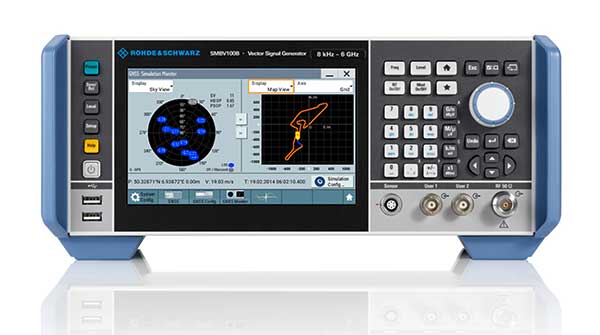As per the report published by Fior Markets, the global GNSS Simulators market is expected to grow from USD 110 billion in 2020 and to reach USD 219.18 billion by 2028, growing at a CAGR of 9% during the forecast period 2021-2028.
The GNSS Simulators market is witnessing significant growth in the past years. The increased adoption of consumer IoT goods and unmanned aerial vehicles are two significant drivers driving market growth (UAVs). As a result of these considerations, the demand for precise GNSS simulators to test various consumer products is increasing. The expansion of the GNSS Simulators Market is attributed to main factors such as the increasing penetration of unmanned aerial vehicles (UAVs), consumer IoT products, and IoT applications, which have increased the demand for accurate GNSS simulators to test various consumer gadgets.
GNSS satellites transmit a GNSS simulator, allowing GNSS receivers to process simulated signals that are similar to those processed by genuine GNSS satellites. It differs from live environment testing in that the GNSS simulation captures all environmental factors as well as simulated satellite signals. With the help of a GNSS simulator, testers may create and run multiple test scenarios with total control over the location, date, and time, environmental conditions, vehicle motion, and signal imperfections and mistakes.
COVID-19 has stunned the world and thrown economies into disarray. Many Communications Service Providers (CSPs) began experiments and rollouts of 5G networks in 2019. Through spectrum auctions, infrastructure contracts, and other activities, many governments were preparing for rollouts. However, the arrival of the COVID-19 pandemic has had a significant influence on both 5G rollouts and readiness. Several countries have experienced delays in their spectrum auctions. The technologies used in 5G networks have a large bandwidth for better time resolution, making them an ideal environment for precise positioning. As a result, it plays a crucial role in GNSS. As a result, the COVID-19 outbreak has had an indirect impact on GNSS, as 5G/GNSS will be at the heart of many future location engines in the LBS and IoT domains.
Some notable players operating in the global GNSS Simulators market include Orolia, CAST Navigation, Accord Software and System, Racelogic, Syntony GNSS, Teleorbit, Spirent Communications, Rohde & Schwarz, VIAVI Solutions, Hexagon, Shanghai Huace Navigation Technology Ltd, Averna, and M3 Systems.
- In October 2020, On the VIAVI 3920B Radio Test Platform and 8800SX Digital Radio Test Set, VIAVI Solutions and EF Johnson Technologies launched additional automated test capabilities for KENWOOD Viking VM6000 and VM7000 series radios, and high-power VM radio models VM5730H, VM7630H, and VM7730H.
- In December 2020, Hexagon|NovAtel launched a new marine-certified GNSS receiver for nearshore applications named MarinePak7. It’s a multi-constellation, multi-frequency receiver designed specifically to receive NovAtel’s Oceanic Correction Service, with a horizontal accuracy of up to three centimeters (95%) in a marine environment.
A complete PDF sample copy of the report: (Full Table of Contents, List of Tables & Figures, and Chart included)
The hardware segment dominated the market and held the largest market share of 38.9% in the year 2020
Based on components, the global GNSS Simulators market is segmented into hardware, services, and software. The component segment dominated the market and held the largest market share of 38.9% in the year 2020. This growth is attributed to the need to maintain and update the deployed GNSS simulator, as it permits signal simulations and is an important part of the simulation process.
The vehicle assistance systems segment dominated the market and held the largest market share of 42% in the year 2020
Based on application, the global GNSS Simulators market is segmented into location-based services, vehicle assistance systems, and others. The vehicle assistance systems segment dominated the market and held the largest market share of 42% in the year 2020. This growth is attributed to the These technologies give advantages such as adaptive cruise control, adaptive light control, automatic parking, collision avoidance systems, driver sleepiness detection, intelligent speed adaption, and night vision.



































